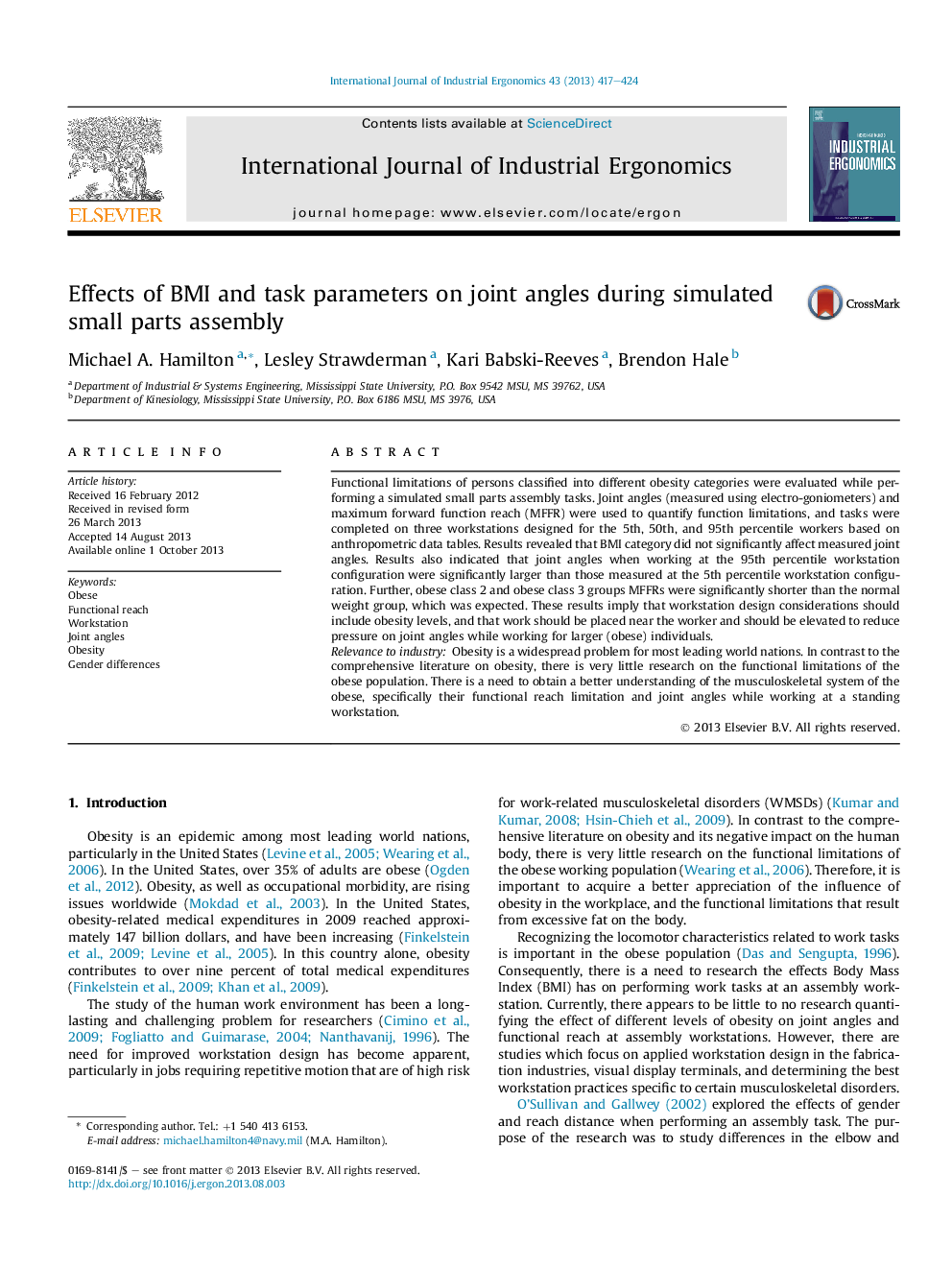| Article ID | Journal | Published Year | Pages | File Type |
|---|---|---|---|---|
| 1096045 | International Journal of Industrial Ergonomics | 2013 | 8 Pages |
•We evaluated the effects of obesity on performance of assembly workstation tasks.•The obesity and workstation interaction significantly impacted observed angles.•Maximum frontal functional reach was significantly shorter for obese participants.
Functional limitations of persons classified into different obesity categories were evaluated while performing a simulated small parts assembly tasks. Joint angles (measured using electro-goniometers) and maximum forward function reach (MFFR) were used to quantify function limitations, and tasks were completed on three workstations designed for the 5th, 50th, and 95th percentile workers based on anthropometric data tables. Results revealed that BMI category did not significantly affect measured joint angles. Results also indicated that joint angles when working at the 95th percentile workstation configuration were significantly larger than those measured at the 5th percentile workstation configuration. Further, obese class 2 and obese class 3 groups MFFRs were significantly shorter than the normal weight group, which was expected. These results imply that workstation design considerations should include obesity levels, and that work should be placed near the worker and should be elevated to reduce pressure on joint angles while working for larger (obese) individuals.Relevance to industryObesity is a widespread problem for most leading world nations. In contrast to the comprehensive literature on obesity, there is very little research on the functional limitations of the obese population. There is a need to obtain a better understanding of the musculoskeletal system of the obese, specifically their functional reach limitation and joint angles while working at a standing workstation.
